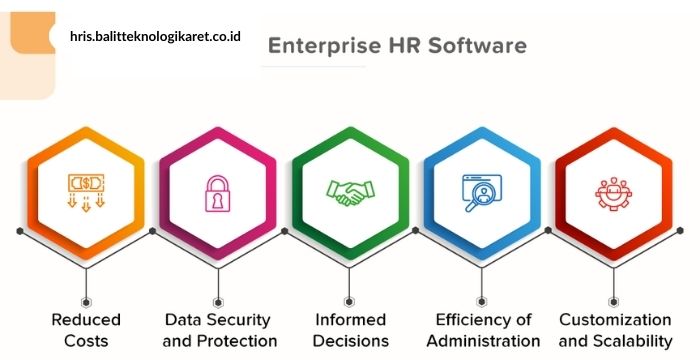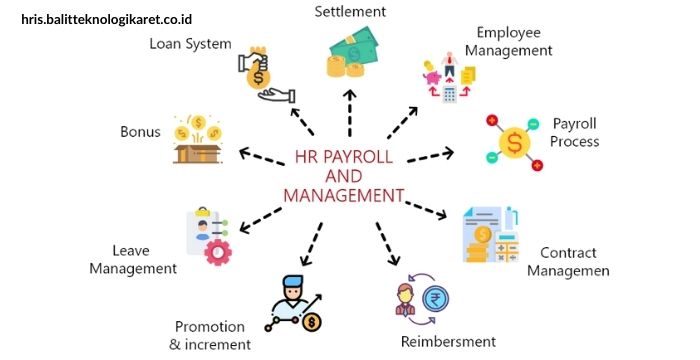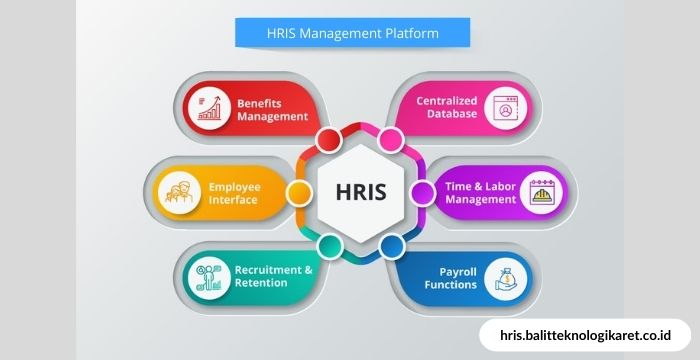I. Introduction
hris.balitteknologikaret.co.id | Enterprise HRIS Software – In the fast-paced world of enterprise-level businesses, one aspect stands out as pivotal to success: effective human resources management. It’s not just about overseeing a large workforce; it’s about optimizing HR operations to achieve strategic business goals. This is where Human Resource Information System (HRIS) software for enterprises comes into play.

The Need for Robust and Scalable HRIS Solutions
Enterprise-level businesses operate on a grand scale, often with thousands of employees spread across multiple locations. Managing this vast human capital effectively while ensuring compliance with complex labor regulations is a formidable challenge. It’s not something that can be done efficiently through spreadsheets or manual record-keeping. The need for robust, scalable, and highly efficient HRIS solutions is evident.
II. What Is Enterprise HRIS Software?
A. Defining Enterprise HRIS
At its core, Enterprise HRIS software is an integrated suite of tools and solutions designed to streamline and enhance human resources management at a large scale. It combines a wide array of functionalities, from basic HR tasks like employee record-keeping and payroll processing to advanced features like data analytics and employee self-service portals.
B. Key Features and Functionality
Enterprise HRIS software offers a comprehensive set of features tailored to meet the unique needs of large organizations. These features typically include:
- Comprehensive HR Management: All-encompassing tools for managing employee data, recruitment, benefits administration, and performance evaluations.
- Advanced Reporting and Analytics: Robust reporting capabilities that provide real-time insights into HR metrics, helping organizations make data-driven decisions.
- Integration Capabilities: The ability to seamlessly integrate with other enterprise systems such as finance, accounting, and customer relationship management (CRM).
- Scalability for Growing Enterprises: The capacity to grow and adapt alongside the business, accommodating an expanding workforce and evolving HR needs.
C. Benefits of Enterprise-Level HRIS
The advantages of implementing Enterprise HRIS are extensive. These systems significantly reduce administrative burdens, enhance data accuracy, and empower HR professionals to focus on strategic tasks rather than mundane paperwork. Moreover, they enable organizations to make smarter decisions by providing access to valuable insights from employee data. In an era where information is power, Enterprise HRIS software equips businesses to harness that power efficiently.
IV. Advantages of Enterprise HRIS Software
A. Improved HR Efficiency
One of the foremost advantages of Enterprise HRIS software is the remarkable boost in HR efficiency it brings. With automation of routine HR tasks like payroll processing and leave management, HR professionals can allocate more time to strategic functions. It’s like having a tireless assistant that handles repetitive tasks flawlessly, freeing you to focus on what truly matters – nurturing your workforce and driving organizational growth.
B. Enhanced Employee Experience
Today’s employees expect more than just a paycheck; they seek a satisfying work experience. Enterprise HRIS empowers HR departments to provide just that. Self-service portals allow employees to access their information, request time off, and manage their benefits easily. This translates to happier, more engaged employees who feel empowered and connected to their workplace.
C. Data-Driven Decision-Making
In the digital age, data reigns supreme, and Enterprise HRIS is a treasure trove. With advanced reporting and analytics features, you can turn raw data into actionable insights. Analyzing turnover rates, employee performance, and even predicting future HR needs becomes a breeze. This data-driven decision-making not only benefits HR operations but has a ripple effect on the entire organization’s strategic planning.
D. Compliance and Security
In an era of stringent data privacy regulations, compliance is non-negotiable. Enterprise HRIS software ensures that HR processes adhere to legal requirements, reducing the risk of costly compliance violations. Moreover, robust security measures protect sensitive HR data, assuring employees that their personal information is in safe hands.
V. Implementing Enterprise HRIS Software
A. Steps to Successful Implementation
Implementing Enterprise HRIS software is a significant undertaking, but with a well-thought-out plan, it can be a smooth transition. It typically involves:
- Assessment: Understanding your organization’s unique HR needs.
- Selection: Choosing the right Enterprise HRIS solution.
- Configuration: Tailoring the software to your specific requirements.
- Testing: Ensuring that the system functions correctly.
- Training: Equipping HR staff and end-users with the necessary skills.
- Go-Live: Launching the system and monitoring its performance.
B. Common Challenges and Solutions
While the benefits are substantial, challenges can arise during implementation. These can include data migration hiccups, resistance to change, and integration complexities. Addressing these issues proactively with the help of experienced HRIS consultants can smoothen the path to success.
C. Employee Training and Adoption Strategies
Investing in thorough training and fostering a culture of continuous learning is essential. Employee adoption is crucial for realizing the full potential of Enterprise HRIS software. Providing clear guidance, user-friendly interfaces, and responsive support can ease the transition and boost acceptance.
VI. Real-World Success Stories
It’s not just about the promises HRIS software makes; it’s about the tangible results it delivers. In this section, we’ll delve into real-world examples of enterprises that have thrived with the implementation of HRIS solutions. We’ll explore how these systems have led to measurable improvements in HR operations and, ultimately, driven business growth.
VII. Future Trends in Enterprise HRIS Software
A. Integration with Emerging Technologies
The future of HRIS software holds exciting possibilities as it integrates with emerging technologies. Artificial Intelligence (AI) and Machine Learning (ML) are poised to transform HR processes. Imagine AI-powered chatbots handling employee inquiries, or ML algorithms predicting turnover risks based on historical data. Additionally, the Internet of Things (IoT) may enable wearable devices that monitor employee well-being and productivity. These innovations are not distant dreams but are already shaping the HR landscape.
B. Cloud-Based Solutions and Remote Work Support
The COVID-19 pandemic accelerated the shift toward remote work, making cloud-based HRIS solutions indispensable. The future of work lies in hybrid and remote models, and HR software must adapt. Cloud-based HRIS allows for seamless access from anywhere, fostering a sense of connection among geographically dispersed teams. It also ensures that HR data remains secure and accessible, regardless of physical office locations.
C. Customization for Enterprise-Specific Needs
Enterprises are as unique as fingerprints, each with its own set of HR needs. Future HRIS software will focus on hyper-customization, allowing organizations to tailor the system to their specific requirements. Whether it’s intricate compensation structures, complex reporting hierarchies, or industry-specific compliance, HRIS solutions will be designed for adaptability. This flexibility will empower enterprises to optimize HR operations for their distinct contexts.
VIII. Conclusion
In the ever-evolving world of HR management, Enterprise HRIS software stands as a beacon of innovation and efficiency. The value it brings to organizations, both large and small, is immeasurable. From streamlining HR processes to providing data-driven insights, HRIS is the cornerstone of modern HR practices. As we gaze into the future, the integration with emerging technologies, cloud-based solutions, and customized HRIS software tailored to enterprise-specific needs will continue to redefine HR management.
The time has come for enterprises to embrace this transformative power fully. It’s not merely an investment in software; it’s an investment in the workforce’s future. Take the leap into effortless HR operations with Enterprise HRIS software, and watch your organization thrive in the dynamic landscape of tomorrow’s business world. Your workforce deserves nothing less, and your enterprise will undoubtedly reap the rewards.

